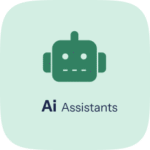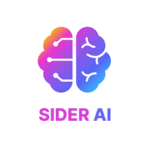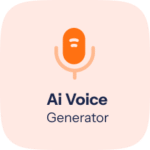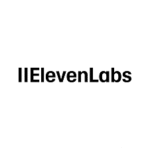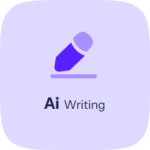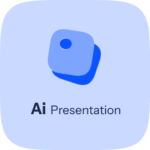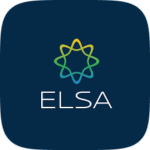Revolutionizing Workflows: How AI Automation Software Transforms Business Operations
In today’s rapidly evolving digital landscape, AI automation software for streamlining business operations has become an essential tool, not a luxury. By minimizing repetitive tasks and enhancing data-driven decision-making, AI-driven automation empowers organizations to operate with greater agility, efficiency, and innovation. Whether you’re a global enterprise or a solo entrepreneur, intelligent automation can significantly impact ROI, customer retention, and team productivity. With technologies like business process automation (BPA), workforce analytics, and intelligent automation tools, businesses across every industry are reshaping how they operate. In this article, we’ll explore the transformative power of AI automation software—what it is, how it works, and how your business can leverage it to stay ahead of the competition.
🌐 What Exactly Is AI Automation Software—And Why Should You Care?
AI automation software merges artificial intelligence capabilities with traditional automation to do more than just execute tasks—it makes informed decisions throughout the process. Unlike static, rule-based systems, AI automation continuously learns, adapts, and responds in real time to changing conditions. From AI chatbots transforming customer support to intelligent systems managing supply chains, businesses are using these tools to gain a strategic edge. Leveraging machine learning, natural language processing (NLP), and robotic process automation (RPA), AI automation tools replicate complex human workflows with minimal supervision. This innovation moves businesses from simply completing tasks to achieving optimal outcomes.
🧠 What Can Modern AI Automation Tools Do for You?
- Seamlessly connect with existing tools like CRM, ERP, and project managers
- Use predictive analytics to forecast trends and support smarter decisions
- Enable smooth communication through conversational AI interfaces
- Streamline data collection with automated extraction and live reporting
- Orchestrate workflows across departments, teams, and functions
Did you know? AI automation can reduce manual workloads by up to 45%, according to McKinsey & Company.
📈 How Is AI Automation Impacting Real Businesses?
The real-world value of AI automation software is measurable. Companies now enjoy shorter turnaround times, fewer errors, and boosted employee morale. Amazon and UPS use AI to optimize logistics and cut last-mile delivery mistakes. In healthcare, medical centers are automating appointment booking and patient data entry—significantly easing administrative workload. Even smaller businesses are tapping into these efficiencies by automating tasks like invoicing and customer follow-ups, increasing output without adding headcount.
💼 By the Numbers: Tangible Benefits
- Scales operations without needing proportional staff increases
- Cuts task durations through smart workflow automation
- Decreases operational costs by minimizing human errors
📊 Side-by-Side Comparison: Top AI Automation Tools
| Software | Main Features | Pricing | Pros |
|---|---|---|---|
| UiPath | RPA, ML integration, visual drag-and-drop setup | From $420/month | Ideal for large-scale enterprise operations |
| Zapier | App integrations, task automation | Free to $49/month | User-friendly and quick setup |
| Make (Integromat) | Advanced logic, visual workflow design | Free to $29/month | Flexible and economical for SMBs |
🛒 Case Study: Boosting E-commerce Sales with AI Automation
A mid-sized retail brand implemented AI automation in its marketing funnel using Make and ChatGPT APIs. Within just three months:
- 📉 Marketing overhead dropped by 37%
- 📈 Sales rose by 21%
- ⏱ Support ticket resolution time improved 4x
- 🙌 Customer satisfaction reached 89%
Automation also enabled just-in-time inventory alerts, optimizing order fulfillment without hiring more staff. This showcases how strategic AI integration can empower lean teams to achieve enterprise-grade performance.
🚀 Getting Started: Quick Launch Checklist
- Identify core pain points and inefficiencies
- Select an automation tool aligned with your tech stack
- Set measurable goals and key performance indicators (KPIs)
- Test a small-scale pilot project
- Provide team training for smoother adoption
- Refine workflows using performance data and feedback
📚 Curated Resources for Deeper Learning
- HBR: Automation in Knowledge Work
- UiPath – Official Site
- Zapier Learning Hub
- Buy ChatGPT with Crypto to access AI tools more affordably
⚠️ Mistakes to Avoid When Using AI Automation
- Jumping into automation without clarifying the process scope
- Over-engineering solutions without ROI analysis
- Neglecting team onboarding and communication
- Overlooking compliance or data privacy regulations
- Selecting tools without proper vendor vetting
🙌 Client Testimonials
Lisa M., COO at TechGear: “We cut customer complaints by 60% during holiday peaks—AI made scaling feel effortless.”
Raj P., Tech Startup Founder: “Saved 120+ admin hours monthly. Automation helped us stay lean and efficient.”
Emma T., Operations Manager: “We use AI dashboards daily to detect inefficiencies in real-time. It’s truly transformative.”
📢 AI Automation: Myths vs. Facts
| Myth | Fact |
|---|---|
| AI will eliminate all jobs | AI augments jobs by automating redundant tasks and aiding decision-making |
| Only large enterprises can afford it | Many tools offer affordable plans, even for startups and SMBs |
| AI is only for tech sectors | Industries like retail, healthcare, and education benefit heavily from AI |
🔮 What’s Next? Trends to Watch
AI automation continues evolving with emerging trends like hyperautomation, no-code/low-code platforms, and AI-driven decision engines. Gartner forecasts that by 2025, 70% of businesses will use some form of AI-enhanced process automation. Integration with IoT for smart factories and AI copilots supporting employees in real-time will soon become commonplace. Forward-thinking businesses are already positioning themselves to leverage these advancements and gain a competitive edge.
💡 Pro Tips to Maximize Your AI Automation Investment
- Begin small, scale smart: Start with one use-case before expanding
- Process mapping is critical: Understand pain points before applying tech
- Empower your team: Training ensures adoption and long-term ROI
- Track your metrics: Monitor efficiency, speed, cost, and satisfaction
- Select the right partner: Work with trusted providers like Ploonad
📊 Essential Stats You Should Know
- 50% of current work activities are automatable — McKinsey
- Organizations using AI report up to 25% increase in operational efficiency — PwC
- SMBs using automation save approx. $40,000 annually — Salesforce
❓ Frequently Asked Questions
1. What is AI automation software?
It’s a tool that uses artificial intelligence to automate and optimize business processes through intelligent decision-making capabilities.
2. How is it different from regular automation?
Unlike traditional tools that follow static rules, AI automation adapts, improves with data, and evolves over time.
3. Who benefits most from using it?
Industries like finance, healthcare, e-commerce, and manufacturing see major gains due to repetitive processes and data workflows.
4. What are the typical costs?
Prices range from free basic tools (e.g. Zapier) to enterprise solutions costing hundreds per month.
5. Do I need to code?
No need to code—many platforms offer no-code or drag-and-drop options.
6. Will AI replace human jobs?
Not all—AI handles repetitive tasks, freeing people for creative, high-value roles.
7. Best AI tool for startups?
Zapier and Make are cost-effective for SMBs, while ChatGPT supports content and customer interactions.
8. Can AI really improve my customer service?
Yes—AI supports 24/7 service, reduced wait times, and personalized interactions.
9. How secure are AI tools?
Most comply with data standards, but always verify your vendor’s security credentials.
10. How fast can I implement it?
Small setups can go live in hours; broader rollouts may take weeks.
11. What is hyperautomation?
It’s the advanced form of automation combining RPA, AI, and analytics to automate complex workflows.
12. How does AI enhance decisions?
AI delivers insights and recommendations by analyzing large datasets in seconds.
13. Which KPIs should I monitor?
Track cost savings, error rate reductions, employee efficiency, and customer satisfaction.
14. When should I avoid automation?
When a task requires human judgment, creativity, or emotional intelligence.
15. Does AI need the internet to work?
Most solutions are cloud-based, but some offer offline capabilities for limited tasks.
16. Can AI help HR teams?
Yes, by automating resume screening, interview scheduling, and initial assessments.
17. What’s the ROI for automation?
Returns can vary but often range between 100%–500% in the first year post-implementation.
18. Can I use AI within Google Sheets or Excel?
Yes—Zapier, OpenAI plugins, and others enable powerful automation inside spreadsheets.
19. Is AI eco-friendly?
Automation reduces paper use, energy consumption, and waste by improving process efficiency.
20. Which AI tools can I pay for using crypto?
Buy ChatGPT with crypto to access AI tools via secure crypto-friendly platforms.
🔚 Conclusion: Embrace AI Automation to Stay Ahead
AI automation software isn’t just transforming workflows—it’s elevating how businesses compete and grow. Whether you’re automating marketing funnels or streamlining backend operations, intelligent tools offer a clear path to agility and efficiency. Now is the time to evaluate your current processes and explore tools that align with your vision. For customized solutions and expert insights, visit Ploonad and discover how AI can accelerate your business momentum.


















